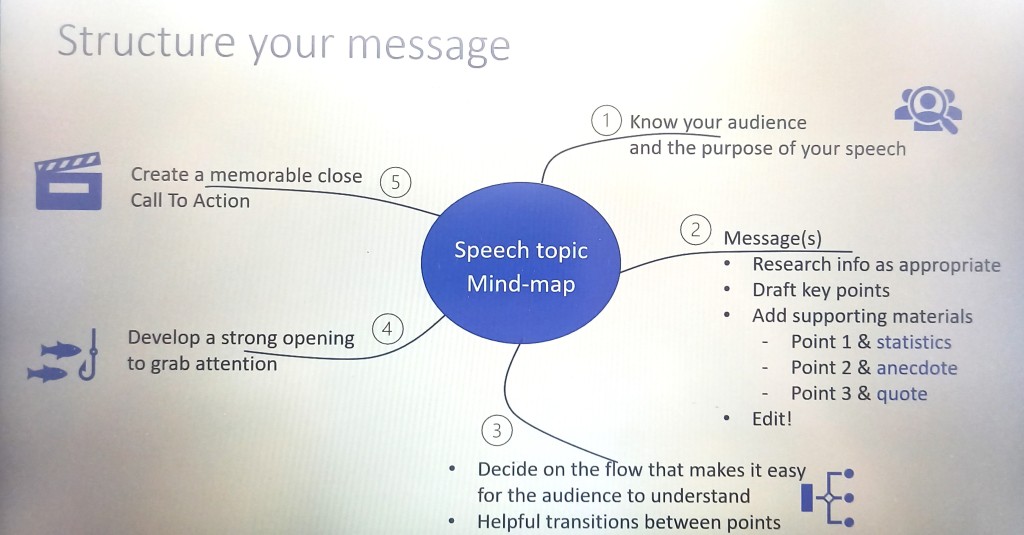
There are five steps to structure your talk. Given that you have chosen the topic, you need to think about how you will put your message across, follow these steps to get the results you want.
1. Know your audience
Find out all you can about your audience. You’ll want to know demographics and what knowledge they already have on the topic. Are they likely to be interested in this topic or antagonistic? This will help you work out how best to approach the topic to suit the audience.
Identify the purpose of your talk – is it to give information or educate the audience? To persuade them to do something? To inspire them to think differently about the topic? To entertain? Ceremonial? The purpose will determine the approach to take and tone of voice you’ll use.
2. Key message(s)
Make sure your information is up to date and research as appropriate, making sure you have relevant references and have fact-checked.
Draft your key points – what are the main messages you want to convey? This is the skeleton or bare bones of your talk. Then consider how you will flesh out those points to convince the listeners – for example, an educational speech would need facts and data, and entertaining speech would benefit from anecdotes and stories, inspiring talks often use quotes from famous people. All these techniques could be used with any speech type as appropriate.
Once drafted, you will need to edit the talk and be ruthless with this – too many speeches are repetitive or too long. All audiences are grateful to the speaker who uses their time well. Plus, they are more likely to remember the message.
3. Decide on the flow
What flow will work best to take the audience with you through the talk? For example, is it a chronological story? Problem to Pleasure is a common structure for persuasion. An entertaining story will use one of the story structures, for example, situation and characters – challenge – roadblocks on the journey – catalyst that made the difference – success – moral or call-to-action.
Plan how to transition from one point to the next, so that your message is joined-up. If it’s an informative speech you could use a numbering system, like this article. Or, moving from challenge to overcoming obstacles, you could say something like, ‘Facing these challenges, we needed to think about how we could overcome them.’
4. Grab attention with your opening
In the first seconds of your talk it is essential to grab the listener’s attention and interest. You need something powerful such as a strong statistic, a powerful quote, a question for the audience, a short amusing anecdote. Then briefly outline the agenda or purpose of the talk, this lets the audience know they are in good hands and they can relax into the talk.
5. Create a memorable close
People will remember the first things you said and the last, there’s plenty of research into attention span so we know how important this is.
Ensure your closing message is clear and suits the type of speech. For example, persuasion would end with a call-to-action, inspiring could use a powerful quote, entertaining could end with the moral of the story.
Use this approach to structure your speech and you will have the impact you want on the audience.
I’ve used a mind-map to show this approach and I use mind-maps to draft the outline of my speeches, you may find that technique helps you too.
Amanda Bouch

